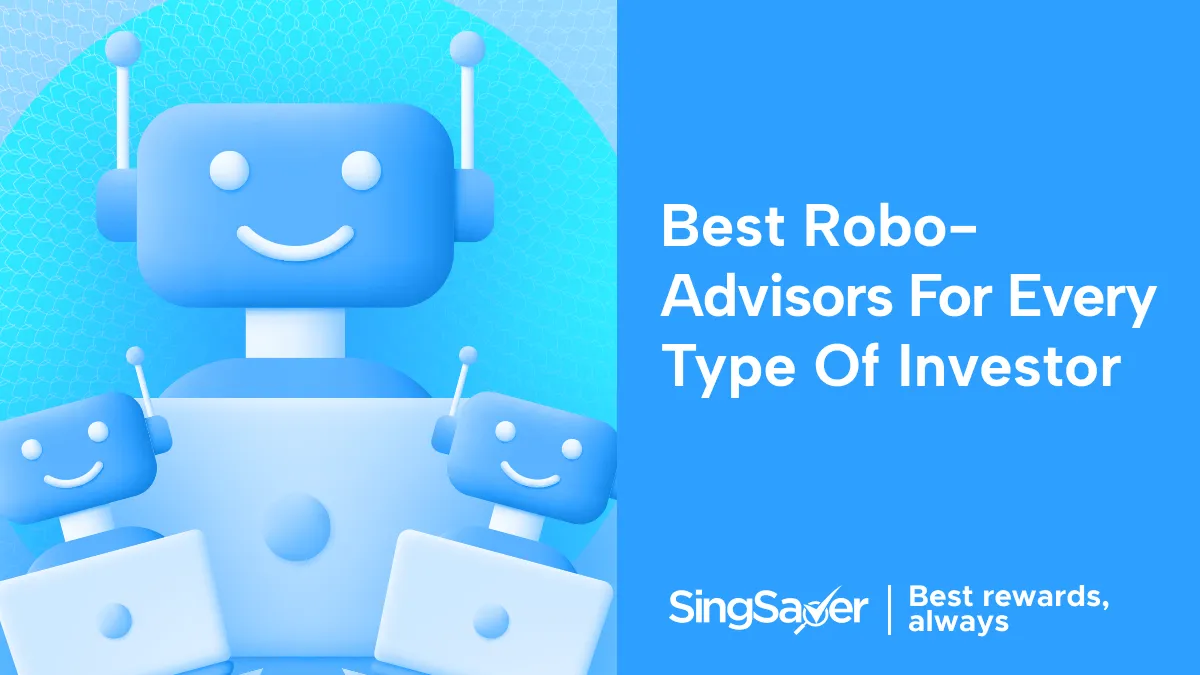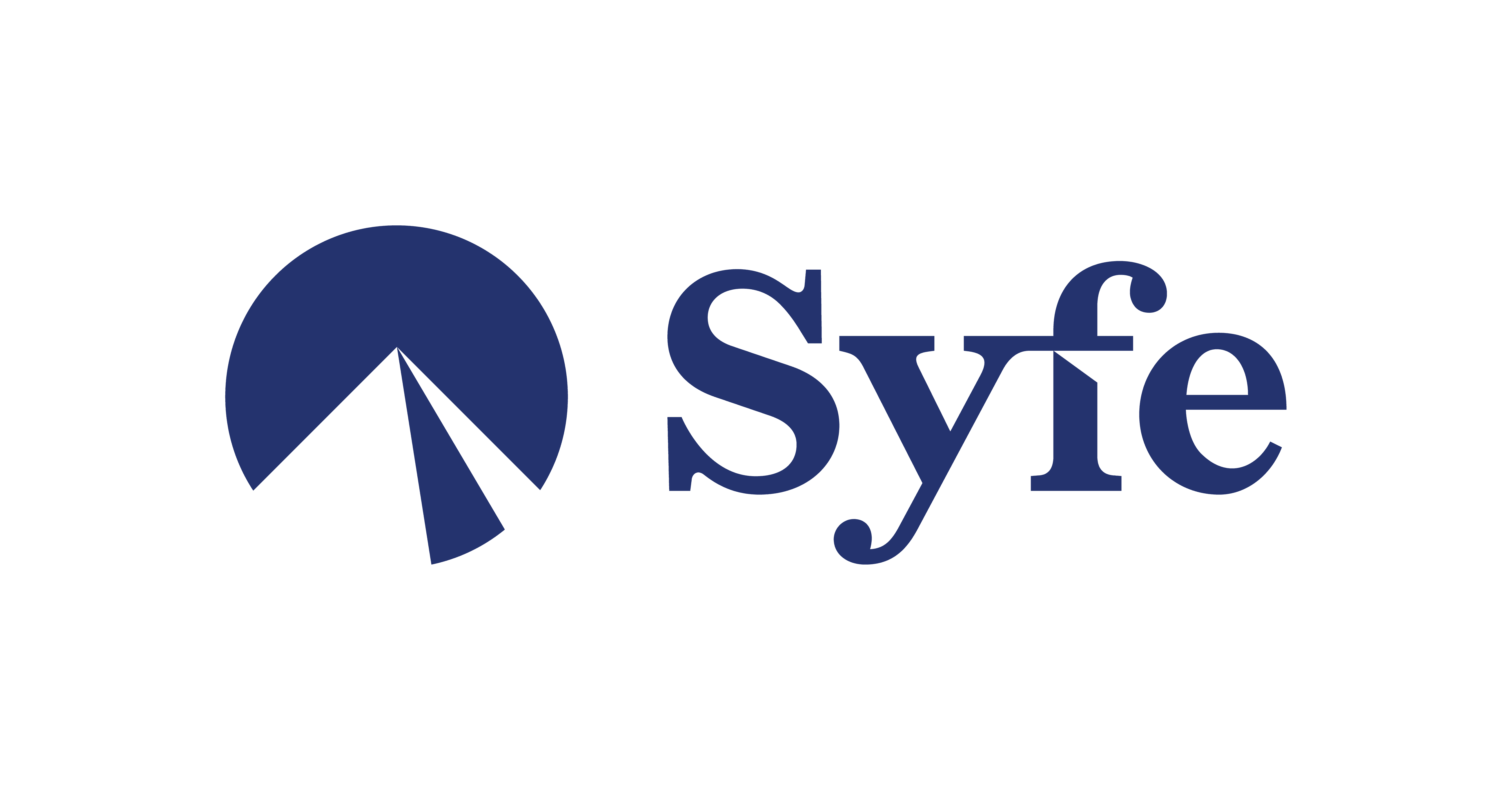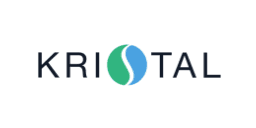Best Robo-Advisors in Singapore (2025): Compare Top Platforms for Smart Investing
Updated: 26 Aug 2025

The information on this page is for educational and informational purposes only and should not be considered financial or investment advice. While we review and compare financial products to help you find the best options, we do not provide personalised recommendations or investment advisory services. Always do your own research or consult a licensed financial professional before making any financial decisions.
Robo-advisors have become a go-to option in Singapore for beginner and seasoned investors alike — thanks to their low fees, ease of use, and smart automation.
Whether you're starting with just S$10 or using your CPF or SRS savings, robo-advisors make it easy to grow your wealth — no financial expertise required. But with so many platforms in the market, how do you choose the best robo-advisor for your needs?
This guide breaks down everything you need to know:
-
What robo-advisors are and how they work
-
Key differences between popular platforms like Endowus, StashAway, and Syfe
-
Fees, performance, portfolio types, and CPF/SRS support
-
How robo-advisors compare to DIY investing, unit trusts, and financial advisors
Whether you’re just getting started or ready to optimise your portfolio, use this guide to make confident, well-informed decisions.
» MORE: Are robo advisors worth it?
What is a robo-advisor?
Think of a robo-advisor as your automated investment helper. It's a smart online platform that uses computer programs (algorithms) to invest your money for you.
How robo-advisors work
It's like putting your investments on autopilot:
-
Tell them about yourself: You answer questions about your financial goals (like retirement or a new home), how much risk you're comfortable with, and when you might need the money.
-
They build your portfolio: Based on your answers, the robo-advisor creates a mix of investments designed for you. This usually includes:
-
ETFs (Exchange-Traded Funds): Imagine these as ready-made baskets of stocks or bonds, tracking a specific market. They give you instant variety.
-
Bonds: Think of these as loans to governments or companies. They're generally less risky than stocks.
-
REITs (Real Estate Investment Trusts): These let you invest in properties like malls or offices and potentially earn income.
-
They manage everything: As the value of your investments changes, the robo-advisor automatically buys and sells assets to keep your portfolio balanced and aligned with your goals. This is called rebalancing.
Why choose a robo-advisor in Singapore?
Here's why they're gaining popularity here:
-
Low entry barrier: You can start investing with as little as S$0 on some platforms.
-
Lower fees: They typically charge less than traditional financial advisors, saving you money in the long run.
-
Stress-free investing: Let the algorithms handle the research and management.
-
CPF/SRS options: Some allow you to invest your CPF and SRS funds for retirement.
-
Easy diversification: They automatically spread your money across different investments to reduce risk.
Compare the best robo-advisors in Singapore (2025)
| Products | Min. Annual Management Fee | Annual Platform Fee | Min. Deposit | Min. Trading Fee | ||||||||
|---|---|---|---|---|---|---|---|---|---|---|---|---|
0 % | S$0 | S$2000 | - | |||||||||
0.75 % | S$0 | S$1000 | 0.75 % | |||||||||
0.2 % | S$0 | S$6000 | 0 % | |||||||||
0.25 % | S$0 | S$1000 | 0 % | |||||||||
0 % | S$0 | S$0 | 0 % | |||||||||
Endowus — Access to institutional-grade funds
- All in management fee of 0.75% p.a.
- Top up your portfolio from as low as S$1
- Receive digital financial planning insights with DBS NAV Planner
- Hybrid Human-Robo advisor approach that makes use of automated processes combined with the expertise of DBS Investment Team to manage and optimise the portfolios
- Enjoy seamless experience with transactions all done using the DBS digibank app
- Enjoy bonus interest rates with DBS's Multiplier program
- Minimum investment of S$1,000 to start
The above information is provided by SingSaver.com.sg for information purposes only. In case of any discrepancy between the information provided by SingSaver.com.sg and relevant information provided by banks, card issuers or card providers (*partner institutions), the information provided by the partner institutions shall prevail. For more information, please refer to our Terms & Conditions and Privacy Policy page.
- Currently the only robo-advisor that allows investing via cash, CPF, or SRS funds
- Annual management fees for cash investment portfolios start from 0.25% p.a. and are tiered, not stacked
- Enjoy a fixed annual management fee of 0.4% for CPF & SRS portfolios
- Cash Smart portfolios have a fixed annual management fee of 0.05%
- Access multi-asset ESG (Environmental, Social, and Governance) portfolios
- Get the opportunity to build personalised portfolios via Fund Smart
- Read our full review of Endowus
- Min. deposit of S$1,000
- Larger investment amounts required to enjoy lower fees
In providing the above information, SingSaver is carrying out introducing activities on behalf of financial advisers. SingSaver is not to be construed as in any way engaging or being involved in the distribution or sale of any financial product or assuming any risk or undertaking any liability in respect of any financial product. Neither singsaver.com.sg or the content on it is intended as securities brokerage or investment advice, as an offer or solicitation of an offer to sell or buy, or as an endorsement, recommendation or sponsorship of any company, security or fund. The content on singsaver.com.sg is for general information purposes only and does not review or include all available companies, products or offers. SingSaver may receive compensation from the brands providing the offers or services appearing on this website. This advertisement has not been reviewed by the Monetary Authority of Singapore.
SingSaver’s take
Endowus stands out by providing Singaporean investors with access to sophisticated investment strategies and funds that were previously the domain of institutional investors. Its support for CPF and SRS investments makes it a strong contender for those focused on retirement planning. The tiered fee structure can be advantageous for users with larger investment amounts.
Pros
Access to institutional-grade funds offers potential for better risk-adjusted returns
Integration with CPF and SRS provides a convenient way to grow retirement savings with tax advantages
Offers a variety of portfolio options, including thematic and customisable ones
Transparent and relatively competitive fee structure, especially for higher AUM
Cons
The platform might be less intuitive for absolute beginners compared to simpler robo-advisors
Fund-level fees on underlying investments will still apply
StashAway — Focus on risk-managed portfolios
- No min. investment amount and account balance required
- Invest your cash or SRS funds with 3 portfolio types: General Investing, Goal-based Investing, and Income Portfolio
- StashAway Simpleâ„¢ lets you earn a projected rate of 1.4% p.a. on your savings
- Free personal finance courses and events on StashAway academy
- Get access to a term life insurance product, with premiums starting from S$115
- Read our full review of StashAway
- Larger investment amounts required to enjoy lower management fees
- Min. S$10,000 required for Income Portfolio
In providing the above information, SingSaver is carrying out introducing activities on behalf of financial advisers. SingSaver is not to be construed as in any way engaging or being involved in the distribution or sale of any financial product or assuming any risk or undertaking any liability in respect of any financial product. Neither singsaver.com.sg or the content on it is intended as securities brokerage or investment advice, as an offer or solicitation of an offer to sell or buy, or as an endorsement, recommendation or sponsorship of any company, security or fund. The content on singsaver.com.sg is for general information purposes only and does not review or include all available companies, products or offers. SingSaver may receive compensation from the brands providing the offers or services appearing on this website. This advertisement has not been reviewed by the Monetary Authority of Singapore.
SingSaver’s take
StashAway has gained popularity in Singapore for its user-friendly platform and its focus on managing investment risk through its proprietary ERA framework. The availability of various portfolio types caters to different investment goals and risk appetites. The low minimum investment makes it accessible to new investors.
Pros
Strong emphasis on risk management through its ERA strategy can provide more stable returns during market volatility
User-friendly platform and mobile app make it easy for beginners to get started
Offers a good range of portfolio options, including thematic investments
No minimum investment amount lowers the barrier to entry
Cons
Fees can be slightly higher for smaller investment amounts compared to some competitors
The proprietary ERA strategy might be less transparent than traditional index-tracking approaches
Syfe — Strong REITs and customisation options
- Currently the only robo-advisor that allows investing via cash, CPF, or SRS funds
- Annual management fees for cash investment portfolios start from 0.25% p.a. and are tiered, not stacked
- Enjoy a fixed annual management fee of 0.4% for CPF & SRS portfolios
- Cash Smart portfolios have a fixed annual management fee of 0.05%
- Access multi-asset ESG (Environmental, Social, and Governance) portfolios
- Get the opportunity to build personalised portfolios via Fund Smart
- Read our full review of Endowus
- Min. deposit of S$1,000
- Larger investment amounts required to enjoy lower fees
In providing the above information, SingSaver is carrying out introducing activities on behalf of financial advisers. SingSaver is not to be construed as in any way engaging or being involved in the distribution or sale of any financial product or assuming any risk or undertaking any liability in respect of any financial product. Neither singsaver.com.sg or the content on it is intended as securities brokerage or investment advice, as an offer or solicitation of an offer to sell or buy, or as an endorsement, recommendation or sponsorship of any company, security or fund. The content on singsaver.com.sg is for general information purposes only and does not review or include all available companies, products or offers. SingSaver may receive compensation from the brands providing the offers or services appearing on this website. This advertisement has not been reviewed by the Monetary Authority of Singapore.
- All-in-one investment platform
- No min. deposit required
- Unlimited free trades for US markets for the first 3 months (subsequently, 2-10 free US trades per month)
- Access US, SG, and HK markets as well as UCITS
- US fractional shares and SG odd lots available
- Supports auto-invest
- Access to real-time stock analysis
- Instant account opening with 24/7 support
- Licensed by MAS
- Read our full review of Syfe
- Management fee and member benefits depend on account tier
In providing the above information, SingSaver is carrying out introducing activities on behalf of financial advisers. SingSaver is not to be construed as in any way engaging or being involved in the distribution or sale of any financial product or assuming any risk or undertaking any liability in respect of any financial product. Neither singsaver.com.sg or the content on it is intended as securities brokerage or investment advice, as an offer or solicitation of an offer to sell or buy, or as an endorsement, recommendation or sponsorship of any company, security or fund. The content on singsaver.com.sg is for general information purposes only and does not review or include all available companies, products or offers. SingSaver may receive compensation from the brands providing the offers or services appearing on this website. This advertisement has not been reviewed by the Monetary Authority of Singapore.
SingSaver’s take
Syfe is a popular choice in Singapore, particularly for its REIT+ portfolio that caters to local investors' interest in real estate. The customisation options provide more control for experienced investors, while the core portfolios offer broad diversification. The platform is generally easy to use and understand.
Pros
Specialised REIT+ portfolio offers unique exposure to the Singapore real estate market
Custom portfolio option (Syfe Select) provides greater flexibility for advanced users
Supports SRS investments
User-friendly platform with helpful educational content
Cons
Fees are in the mid-range compared to other robo-advisors
While customisation is a plus for some, it might be overwhelming for beginners
Kristal.AI — Access to diverse global strategies
- All-in-one investment platform
- No min. deposit required
- Unlimited free trades for US markets for the first 3 months (subsequently, 2-10 free US trades per month)
- Access US, SG, and HK markets as well as UCITS
- US fractional shares and SG odd lots available
- Supports auto-invest
- Access to real-time stock analysis
- Instant account opening with 24/7 support
- Licensed by MAS
- Read our full review of Syfe
- Management fee and member benefits depend on account tier
In providing the above information, SingSaver is carrying out introducing activities on behalf of financial advisers. SingSaver is not to be construed as in any way engaging or being involved in the distribution or sale of any financial product or assuming any risk or undertaking any liability in respect of any financial product. Neither singsaver.com.sg or the content on it is intended as securities brokerage or investment advice, as an offer or solicitation of an offer to sell or buy, or as an endorsement, recommendation or sponsorship of any company, security or fund. The content on singsaver.com.sg is for general information purposes only and does not review or include all available companies, products or offers. SingSaver may receive compensation from the brands providing the offers or services appearing on this website. This advertisement has not been reviewed by the Monetary Authority of Singapore.
- Personalise your portfolio with over 200 funds to choose from
- Opt for ready-made portfolios focusing on sectors, geography, and more
- No fees for investment account value less than or equal to US$50,000
- Receive support from a digital relationship manager
- Read our full review of Kristal.AI
- Only accredited investors get access to a wider range of Kristal portfolios
- $0 withdrawal fees apply only to S$ and HK$
In providing the above information, SingSaver is carrying out introducing activities on behalf of financial advisers. SingSaver is not to be construed as in any way engaging or being involved in the distribution or sale of any financial product or assuming any risk or undertaking any liability in respect of any financial product. Neither singsaver.com.sg or the content on it is intended as securities brokerage or investment advice, as an offer or solicitation of an offer to sell or buy, or as an endorsement, recommendation or sponsorship of any company, security or fund. The content on singsaver.com.sg is for general information purposes only and does not review or include all available companies, products or offers. SingSaver may receive compensation from the brands providing the offers or services appearing on this website. This advertisement has not been reviewed by the Monetary Authority of Singapore.
SingSaver’s take
Kristal.AI offers a wide array of global investment options and strategies, making it suitable for investors looking beyond Singapore-centric portfolios. The tiered fee structure, including a 0% tier for smaller accounts, can be attractive. However, the USD-based investment might introduce currency risk for Singaporean investors.
Pros
Access various global investment strategies and ETFs
Lower fee structure, especially for smaller accounts
Custom portfolio options available
Cons
Minimum investment is in USD, which exposes investors to currency fluctuations
No CPF/SRS integration
Investing in Singapore: Busting top 5 myths holding you back (2025)
Rich only? Too risky? We expose the 5 biggest investing myths Singaporeans believe, and why you can (and should) start now.
Robo-advisor portfolio types and strategies
Understanding what you're investing in is key. Robo-advisors offer different portfolio types to match your goals and how much risk you're comfortable with.
Core portfolios: Global diversified
Consider these your standard, well-rounded options. They invest in a mix of stocks and bonds from around the world, aiming for steady, long-term growth.
Good for: Investors who want a simple, diversified approach for the long haul without actively managing their investments.
Thematic portfolios: ESG, REIT+, Tech
These portfolios focus on specific areas or trends that you might be interested in.
-
ESG (Environmental, Social, and Governance): Investing in companies that are environmentally friendly, socially responsible, and have good governance practices.
-
REIT+: Focuses on real estate investment trusts, especially in Singapore, for potential income and growth.
-
Tech: Invests in technology-related companies, which can offer high growth but also come with more risk.
Good for: Investors who have specific interests or beliefs they want their investments to reflect or who see potential in certain sectors.
Customisable portfolios: Build your own
Some robo-advisors, like Syfe and Kristal.AI, let you have more control over what goes into your portfolio. You can choose specific ETFs or asset classes and decide how much of each you want.
Good for: More experienced investors who have a good understanding of different investments and want to create their own strategies.
Rebalancing and risk management explained
One of the biggest advantages of robo-advisors is how they manage risk for you automatically:
-
Regular rebalancing: Robo-advisors periodically (e.g., every few months or once a year) or when your portfolio mix gets too far off track, they'll buy and sell assets to bring it back to your target allocation. This helps keep your risk level consistent.
-
Automated adjustments during market swings: When the market gets bumpy, some robo-advisors might automatically adjust your portfolio to reduce risk. For example, they might sell some stocks (which can be more volatile) and buy more bonds (which are generally more stable).
-
Stop-loss and volatility control: Some platforms might have features to limit potential losses (stop-loss orders) or strategies to smooth out the ups and downs of the market.
-
Why it matters: These automated processes help protect your portfolio and keep it aligned with your long-term goals, without you having to constantly monitor and make changes yourself.
What to do during a stock market crash in Singapore: 2025 investor survival guide
Worried about a stock market crash? Here’s how Singapore investors can stay calm, avoid common mistakes, and make smart long-term moves when markets tumble.
Robo-advisor performance and returns
It's natural to wonder how much money you might make. Remember, past performance is no guarantee of future results.
Historical performance: 1/3/5-year returns
Most robo-advisors will show you how their different portfolio options (conservative, balanced, aggressive) have performed over the past 1, 3, or 5 years.
Robo-advisors vs traditional investments
How do robo-advisors compare to other ways to invest in Singapore?
Robo-advisors vs DIY ETFs
-
Convenience: Robo-advisors handle everything for you. Investing in ETFs yourself requires you to do your own research, buying, and rebalancing.
-
Cost: Brokerage fees for buying and selling ETFs can add up. Robo-advisors charge a percentage-based management fee.
-
Management: Robo-advisors automate rebalancing. You'd have to do it manually with DIY ETFs.
Robo-advisors vs unit trusts
-
Lower fees: Robo-advisors generally have lower management fees.
-
More transparency: Robo-advisors usually tell you exactly which ETFs they invest in.
Robo-advisors vs Financial Advisors:
-
Automation vs personal advice: Robo-advisors are automated and cheaper. Financial advisors offer tailored advice but cost more.
What to expect during market downturns
It's important to have realistic expectations.
-
Past crises: Even well-diversified robo-advisor portfolios can lose value during major market drops like the COVID-19 pandemic or periods of high inflation.
-
No shield from losses: Robo-advisors aim to manage risk, but they can't prevent all losses. Their goal is long-term growth with controlled risk.
» Financial planning Singapore: Your step-by-step guide to a secure future (2025)
Robo-advisor fees and hidden costs
Knowing the fees is crucial for understanding your potential returns.
Management fees, platform fees, ETF/fund fees
Here's a breakdown of typical fees:
-
Management fees: An annual fee, usually a percentage of your total investments with the platform. Often, this fee goes down as you invest more (tiered fees).
-
Platform fees: Some might have a separate fee, but often it's included in the management fee.
-
ETF/Fund fees: The ETFs or funds the robo-advisor invests in also have their own fees (expense ratios). These are usually small but still impact your overall returns.
Currency conversion and dividend withholding taxes
If your robo-advisor invests overseas, watch out for:
-
Dividend tax on US ETFs: Dividends from US-based ETFs can be subject to a withholding tax (around 30% for Singapore residents).
-
FX costs: You might pay fees when your SGD is converted to buy foreign assets and back again when you sell.
-
Singapore ETF advantage: Investing in Singapore-based ETFs usually doesn't have these dividend taxes.
How fees affect long-term returns
Even small fees can add up over time:
-
Simple example: A 5% return minus 1% in fees leaves you with 4%.
-
Long-term impact: Over 10-20 years, that 1% difference can mean a significant amount less in your pocket due to compounding.
-
Cost efficiency matters: Choosing a robo-advisor with competitive and transparent fees is vital for maximising your long-term growth.
How to buy stocks in Singapore (2025): A beginner’s step-by-step guide
New to investing? Learn how to buy stocks in Singapore — from opening a CDP account to picking your first shares, step by step.
Robo-advisors that accept CPF and SRS
For Singaporeans, investing CPF and SRS funds through robo-advisors can be a smart way to boost retirement savings.
Robo-advisors with CPF investing
Currently, Endowus allows you to invest your CPF Investment Scheme (CPFIS) funds.
-
Special CPF portfolios: These are designed to follow CPF rules and invest in approved funds.
Robo-advisors with SRS investing
Endowus, StashAway, and Syfe all accept SRS funds.
-
Why SRS is great: Contributions are tax-deductible, and investment gains are tax-free until retirement.
Benefits of using CPF/SRS for robo investing
-
Tax advantages: SRS contributions reduce your taxable income now, and both CPF and SRS investments grow tax-free until withdrawal in retirement.
-
Long-term growth: Robo-advisors can potentially offer better returns than leaving funds in your CPF or SRS account.
-
Important note: CPF and SRS funds are locked in until retirement age.
» MORE: Beginner investments Singapore 2025: Top 5 easiest ways to start growing wealth
Alternative to robo-advisors - Online brokeragesThe main appeal of robo-advisors lies in their fuss-free, straightforward approach to investing. However, this hands-off approach may not be suitable for those with a more action-oriented mindset. For instance, some investors may want to take action when they spot upcoming market opportunities, such as short-selling during a market correction to potentially profit from when prices drop (compared to waiting out the drop until the market starts rising again). In this case, you’ll want an online brokerage account so you can trade the markets as you see fit. Webull Singapore lets you trade US and SG stocks with zero platform fees, providing a low-cost way to capture market movements to hedge against risk in your investment portfolio. Additionally, the online broker is waiving subscription and redemption fees for mutual funds for now. Longbridge Singapore, a recent entrant in the online brokerage space, has a lifetime commission-free offer for US and HK stocks for those who sign up now. Besides stocks the brokerage also offers REITs, ETFs, warrants, CBBCs, options, and mutual funds, across both Singapore and international markets. In case you’re wondering whether to pick robo-advisors or online brokerages, well, why not both? You can use a robo-advisor to manage your main portfolio, while having an online brokerage will allow you to take action on upcoming market opportunities, hedging against risk potentially improving your overall returns in total. |
Platform experience: Ease of use and support
A good platform makes investing much simpler.
Onboarding and KYC (Singpass etc)
-
Easy account creation: Most robo-advisors have quick online sign-up processes.
-
Fast start: With Singpass integration, verifying your identity is usually very fast.
-
Singpass convenience: Using Singpass makes the process secure and efficient.
Mobile app and dashboard experience
-
Intuitive apps: Look for apps that are clean, easy to navigate, and available on both iOS and Android.
-
Clear data: You should be able to easily see your returns, how your money is allocated, and future projections.
Customer support and education resources
-
Multiple support channels: Check if they offer chat, email, or phone support.
-
Responsive support: Look for reviews on how quickly and helpfully they respond.
-
Learning resources: Many provide blogs, webinars, and market updates to help you understand investing.
Robo-advisors vs other investment options
Robo-advisors vs ETFs DIY
-
Convenience vs control: Robo-advisors are hands-off. DIY ETFs give you more control but require more work.
-
Cost: Robo fees vs brokerage fees – depends on your trading style and portfolio size.
-
Rebalancing: Automated with robo-advisors, manual with DIY ETFs.
Robo-advisors vs unit trusts
-
Lower fees: Generally, robo-advisors are cheaper.
-
More transparency: You usually know exactly what ETFs you're invested in.
Robo-advisors vs financial advisors
-
Automated & cheap vs personal & expensive: Robo-advisors are digital and cost less. Financial advisors offer tailored advice but charge more.
-
Depends on your needs: Simple needs and comfort with digital? Robo. Complex needs and personal guidance? Advisor.
ETFs vs unit trusts in Singapore (2025): Which investment is right for you?
Confused between ETFs and unit trusts? This guide breaks down the key differences — fees, performance, and risks — to help you choose the better investment for your goals.
Final thoughts: Which robo-advisor should you choose in 2025?
The "best" robo-advisor depends on you. Consider:
-
Fees: How much are you willing to pay?
-
Portfolios: Do they match your risk and goals?
-
CPF/SRS: Do you want to invest these funds?
-
Customisation: Do you want more control?
-
Platform: Is it easy to use?
Who might prefer which:
-
Beginners: StashAway for their simplicity and education.
-
Advanced: Syfe (Custom) or Kristal.AI for more control.
-
Retirement Focused: Endowus for CPF/SRS.
Need help choosing? Check out our robo advisor comparison page to see different platforms side by side based on what matters most to you.
Frequently asked questions about robo-advisors
There's no single "best" robo-advisor. The ideal choice depends on your individual investment goals, risk tolerance, the amount you want to invest, and whether you plan to use CPF or SRS funds. Compare fees, portfolio options, platform usability, and customer support to find the best fit for you.
Yes, all investments carry risk. Robo-advisors don't guarantee returns.
The Monetary Authority of Singapore (MAS) regulates most robo-advisors operating in Singapore. This means they are subject to certain rules and regulations designed to protect investors. Always check if a robo-advisor is licensed by MAS before investing.
Yes, certain robo-advisors like Endowus allow you to invest your CPF Investment Scheme (CPFIS) funds. Endowus, StashAway, and Syfe support SRS investments. This can be a tax-efficient way to grow your retirement savings.
In the unlikely event that a robo-advisor closes down, your assets are typically held with a separate custodian bank. This means your investments are segregated from the robo-advisor's operational funds and should be safe. The custodian would typically facilitate the transfer of your assets to another platform or back to you.





